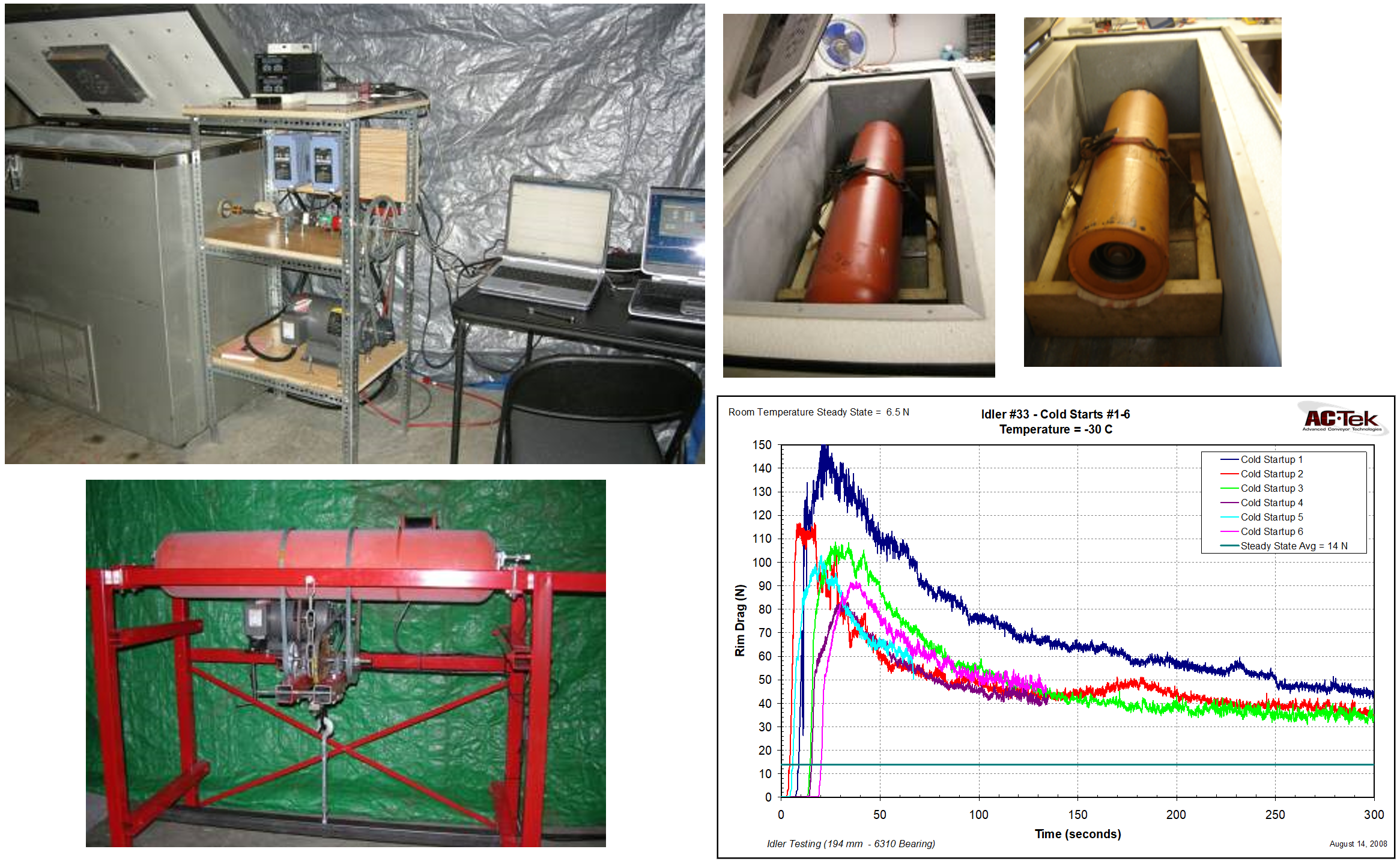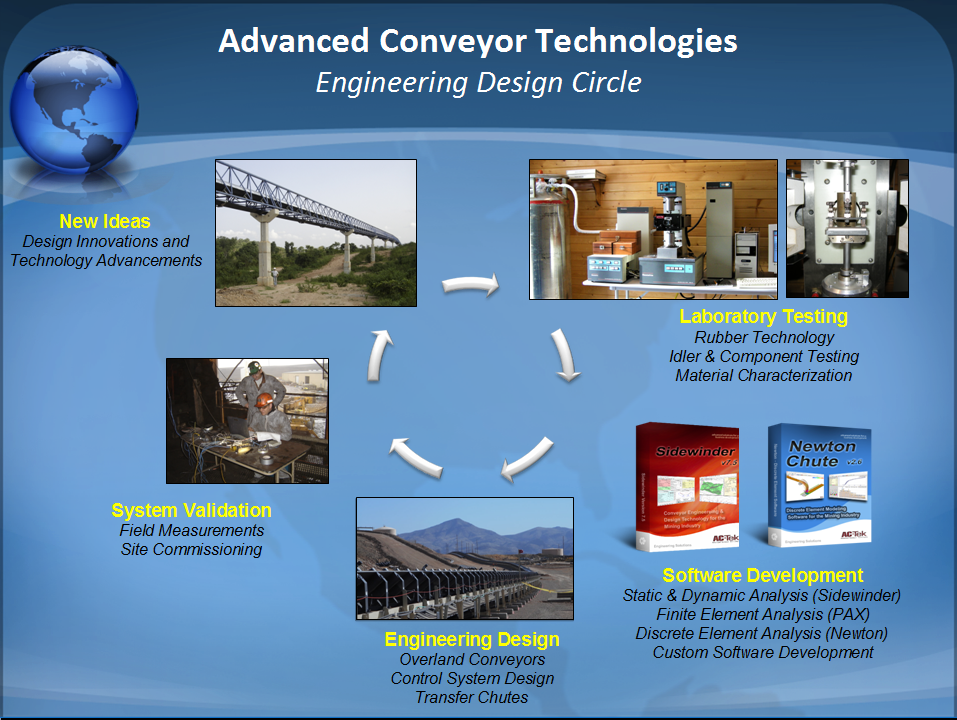
Engineering Consulting
AC-Tek’s core business is the design, and optimization, of complex overland conveyor systems. Everything we do, from in-house laboratory testing and software development, to commissioning and field measurements, has this single goal in mind. We strive to provide our clients with the latest in conveyor technology, resulting in a safe, reliable, and commercially competitive design.
We offer the following services:
• Conveyor System Design (Trough & Pipe Conveyors)
• Static & Dynamic Analysis
• Feasibility Studies & Route Optimization<
• Data Acquisition / Field measurements / Forensic Engineering
• Finite Element Analysis (Pulleys, Belting, Turnovers, Transitions, etc)
• Discrete Element Analysis (Transfer Chutes, Bucket Wheel Reclaimers, etc)
Conveyor System Design
Is the conveyor being provided to you by your contractor safe and reliable? Have they thought through all the “what if” scenarios during all possible starting, and stopping conditions? AC-Tek will provide a detailed analysis and recommendations for your system using the latest engineering technology.
We offer a competitive, reliable, and safe design of conveyors from the very simple to complex conveyors. Our goal on all conveyor designs is to optimize the conveyor to reduce capital cost while increasing the reliability and safety of the system.
AC-Tek has written specialized software for the design of overland conveyors. In particular, our Sidewinder conveyor design software is specifically tailored for this work.
Our conveyor designs includes power estimation, dynamic analysis, belt rating minimization, drive configuration, horizontal and vertical curve analysis, belt flap analysis, turnover analysis, splice design, pulley design, terrain modeling and optimization, idler configuration and spacing optimization, and much more.
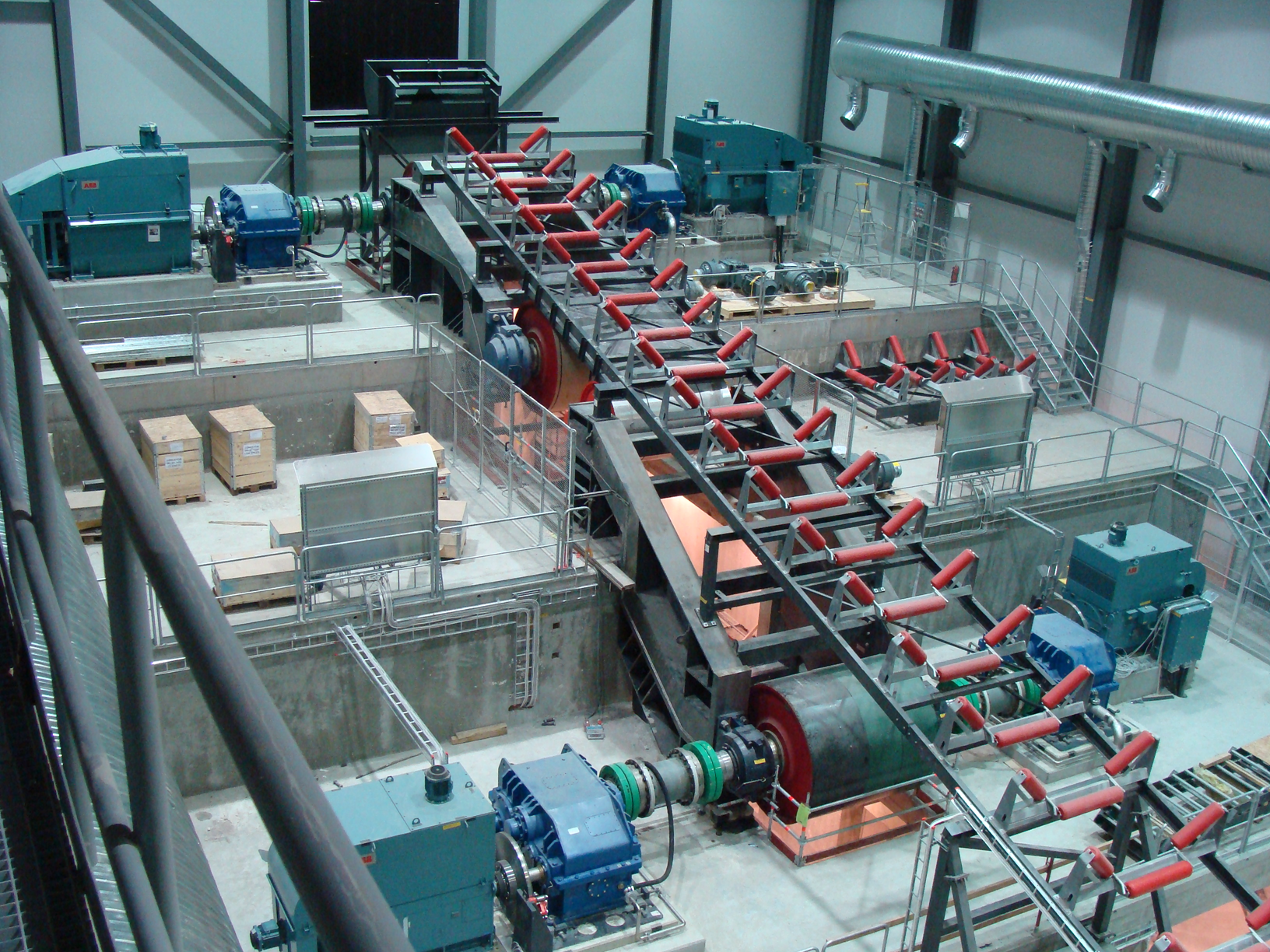

Static & Dynamic Analysis
Static analysis analyzes the conveyor during steady state operation. Static analysis assumes the belt is rigid and does not take into account any time transient tension during starting and stopping.
Dynamic analysis is essential for all conveyors except perhaps for short and simple belts. It is used to predict the belt’s response to transient starting and stopping force which may be applied by the motors, brakes, take-up, etc.
Dynamic analysis simulates the time transient belt tensions, velocities, and displacement that occur during starting and stopping. Transient conditions are numerically solved taking into account the elasticity and the non linear displacement force relationship of the belt.
Dynamic analysis is used to:
• Test and fine tune starting and stopping controls
• Simulate “what if” scenarios such as PLC failures, variations in brake torque, mechanical equipment failures, power outages, etc.
• Determine momentary belt tensions and speeds
• Predict force and displacement at the take-up
• Simulate the control algorithms or mechanical responses of specifics drive systems such as VFD, fluid couplings, wound rotor motors, soft start, etc.
A conveyor belt is a very complex piece of machinery. The drive system, belt, conveyor profile, belt loading, take-up properties, and idlers all interact to produce transient forces during starting and stopping. Without dynamic analysis it is impossible to predict the outcome of a specific drive system or control algorithm.
Dynamic analysis is a very inexpensive tool to properly design a conveyor, thus avoiding potential premature failures caused by “unexpected” transient forces.
Feasibility Studies & Route Optimization
The design of any overland conveyor begins with the proper selection of an optimized conveyor routing. The best path from point A to point B is not always a straight line. In many cases the conveying system must be routed around lakes, hills, towns, environmentally sensitive areas, and other such obstacles. Snaking conveyor routes (both horizontally and vertically) are often required to traverse these obstacles.
As important, but far less obvious, is the optimum vertical path the conveyor should follow. Accurate belt stresses and tensions must be determined before the minimum curve radii can be calculated.
What are the tradeoffs between the conveyor design and the earthwork requirements? Is it more economical to increase the belt rating, width, or speed, in order to reduce the cut and fill requirements? Is that the best solution or is there an entirely different routing that could be used?
One quickly realizes that the interaction between the routing, earthworks, and conveyor design is extremely critical, and these items should not be treated independently, but rather as a complete system.
Historically, this optimization process was painstakingly difficult, often involving several different engineering groups. Many times each group was unaware of the requirements of the others, thereby missing opportunities to achieve an ultimate design.
When AC-Tek began the development of the “Sidewinder” conveyor design software, the above issues were their primary concerns. The program was designed from the ground up with the ability to directly import and work with the existing 3D surface topology. The conveyor routing is overlaid on the 3D surface which directly couples the conveyor design and routing. Changes in the conveyor design automatically affect the conveyor routing, earthwork volumes, and capital costs estimations.

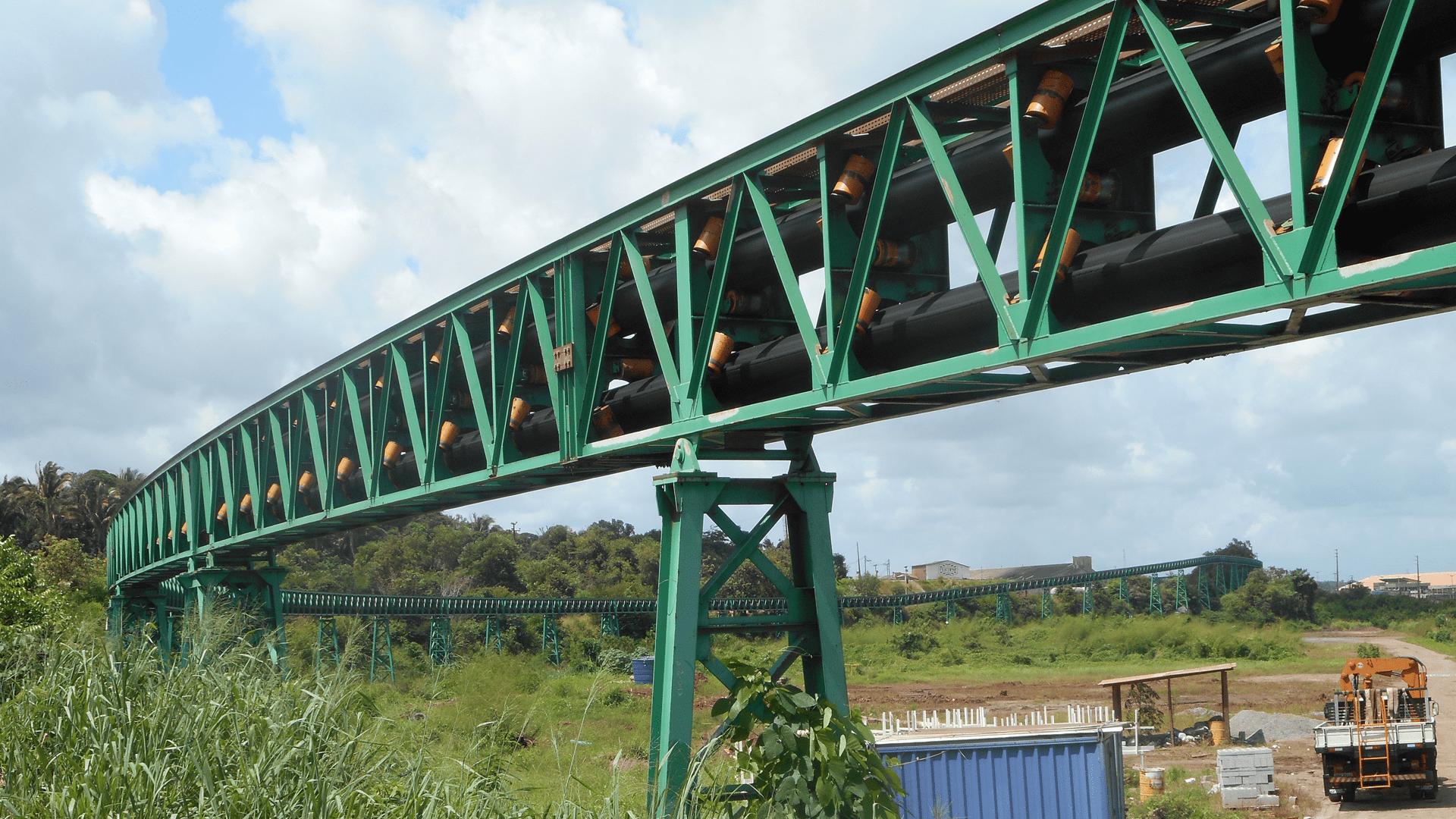
Pipe Conveyor Design
AC-Tek has been involved with the design of numerous pipe conveyor systems around the world. Pipe conveyors have very unique and special characteristics which must be thoroughly understood for the proper tracking, feed, discharge, and control of the system. Accurate power predictions are imperative to minimize belt ratings, structural costs, and long term operating costs.
AC-Tek has incorporated many of these items in the Sidewinder conveyor design software. Furthermore, AC-Tek has taken field measurements to verify the belt tensions, and dynamic behavior on several pipe conveyor systems.
Data Acquisition / Field measurements / Forensic Engineering
In order to maximize the operational life of a conveyor belt system, it is essential to understand the actual operating conditions of its equipment, and the system as a whole. This includes accurate knowledge of the operating forces, the dynamic behavior of the system, and all other significant design parameters. This information is also indispensable in forensic engineering, particularly when critical equipment has failed. In order to obtain this information, conveyors can be equipped with a variety of both temporary and permanent data acquisition equipment and sensors.
The reasons for obtaining measurements on conveyors include:
• Equipment Validation (typically verified during commissioning)
• Verification of Theoretical Calculations
• Condition Monitoring and Long Term Data Trending
• Forensic Engineering (something has failed, why?)
AC-Tek has written several papers on data acquisition, if you would like more information or a copy of these papers just drop us an E-mail.
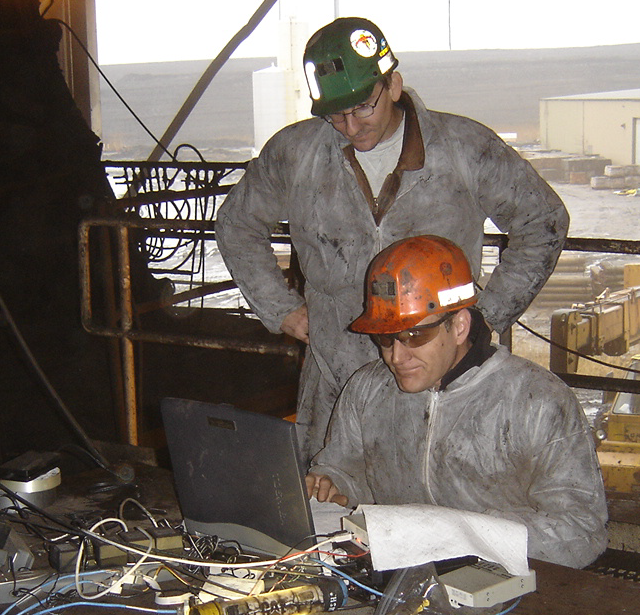
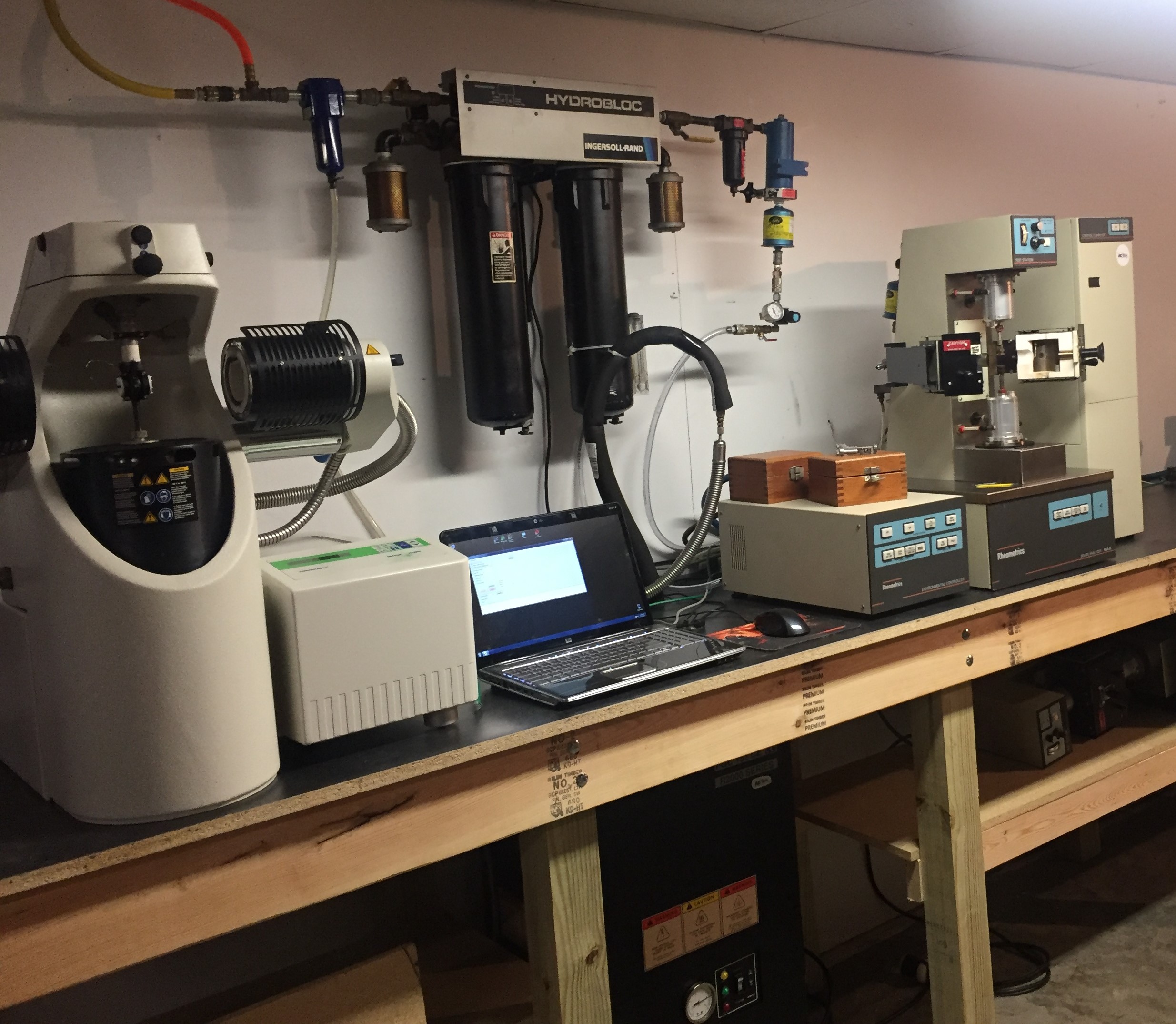
Rubber Rheology
There are several computational methods for calculating the power consumption of a conveyor belt. The two most commonly used approaches are the DIN 22101 methodology, and the CEMA method. Although these methods are appropriate for calculating the power of smaller conveyor systems, more advanced methodologies should be used for overland conveyor designs.
Historically, there have been numerous papers written on the importance of the belt’s rubber viscoelastic properties (Spaans, Jonkers, Wheeler). Additionally, the newest (sixth edition) CEMA conveyor design book has also finally embraced this important aspect in conveyor technology. Rubber viscoelastic properties however, can vary significantly from manufacturer to manufacturer. Additionally many manufacturers have several rubber compounds to choose from. Furthermore, a specific rubber compound’s viscoelastic losses are a function of:
• Rubber cover compound
• Carcass type and cover thickness
• Ambient temperature
• Idler spacing, trough angle, and idler diameter
• Material loading
• Belt speed
All of the above parameters can affect the rubber indentation as the belt passes over the idler, and thus the rolling resistance losses and power consumption of the conveyor. On long overland conveyers viscoelastic losses are not only important, but they can be the most significant component in the power calculations. It is these types of installations where accurate power predictions are the most difficult to calculate and can vary significantly from the “basic” calculation methods.
For these reasons, AC-Tek has invested in a Rheometrics RSA Solids Analyzer. This machine is capable of measuring the rubber’s viscoelastic properties at various temperatures, frequencies (speeds), and strains (idler normal forces). A wide range of tests are conducted, and the results compiled into what’s known as a rubber viscoelastic “Master Curve”.
These viscoelastic master curves can then be imported into the “Sidewinder” conveyor software in order to accurately predict the power consumption of a particular conveyor system. Using this information allows the conveyor design to be optimized for a specific terrain, regional climate (annual temperature range) and a wide range of other parameters.
For more information on rubber viscoelasticity, conveyor power consumption, or the “Sidewinder” conveyor design software, please contact us. Our knowledgeable engineers are always happy to discuss how the most “Advanced Conveyor Technologies” can help benefit you!
Finite Element Analysis
AC-Tek’s engineers have over 15 years of experience using the latest finite element analysis software. This includes the ANSYS finite element software. More importantly however, our experience is focused on the material handling industry and specifically belt conveyors.
This includes:
• Pulley & Shaft Analysis
• Splice Fatigue Analysis
• Idler Junction Stresses
• Belt Flap Modal Analysis
• Turnover & Transition Stress Analysis
• Structural Audits
• General FEA Consulting
The reasons for obtaining measurements on conveyors include:
• Equipment Validation (typically verified during commissioning)
• Verification of Theoretical Calculations
• Condition Monitoring and Long Term Data Trending
• Forensic Engineering (something has failed, why?)
AC-Tek has written several papers on data acquisition, if you would like more information or a copy of these papers just drop us an E-mail.
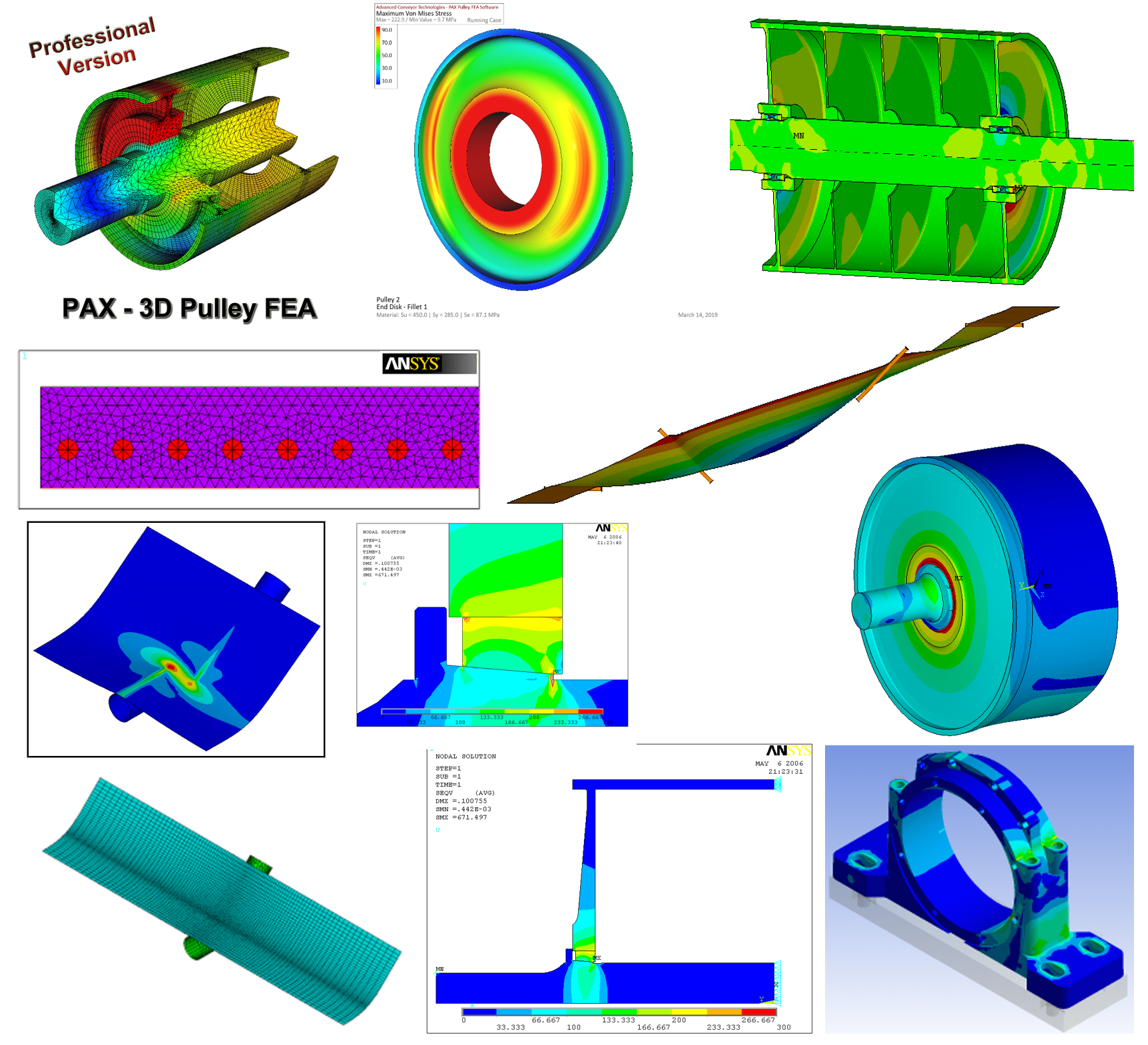

Discrete Element Analysis
The proper modeling of granular flow using the DEM method has the potential to be one of the most significant scientific advancements in the mining industry today. Previously general rules-of-thumb and past experience were the only tools available to the design engineer. Now complex material flow problems can not only be accurately modeled, but designs can be quantitatively compared against one another. This gives the designer the ability to optimize the system in a manner never before possible. Additionally, a wide range of “worst case” material properties can be simulated, thereby allowing the designer even further insight as how the system will behave before it is installed.
The Discrete Element Method (DEM) is the name given to the process in which the large-scale behavior of a complex material systems can be modeled and simulated on a computer. In many instances this involves the mathematical modeling of hundreds of thousands of individual discrete “particles” or “clusters of particles”.
This process is a radical change to the trial and error methods used in the past. However, the DEM method should be applied and used no differently than any other “tool” in an engineer’s toolbox (Fig. 3). It must be combined with good engineering knowledge, design experience, and a firm understanding of the material’s characteristics. Only a few years ago, common DEM problems involved a mere 10,000 to 20,000 particles, and required weeks, or more, to solve a single flow simulation. Now these same problems can be solved in a few hours, and even minutes. Simulations involving millions of particles (or more) are now possible. Our real-time flow simulation software “Newton” is now commercially available.
Laboratory Testing
AC-Tek has developed a wide range of in-house test equipment. From belt troughability testing, to a temperature controlled variable frequency idler testing rig, to a wide range of different material testing equipment. If it’s part of a conveyor, we want to know everything we can about it! Research and development are key to advancing conveyor technology. Combined with a plethora of real world field measurements, AC-Tek completes the design circle from concept to finished system.
